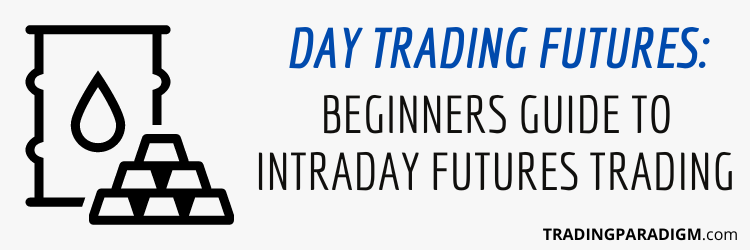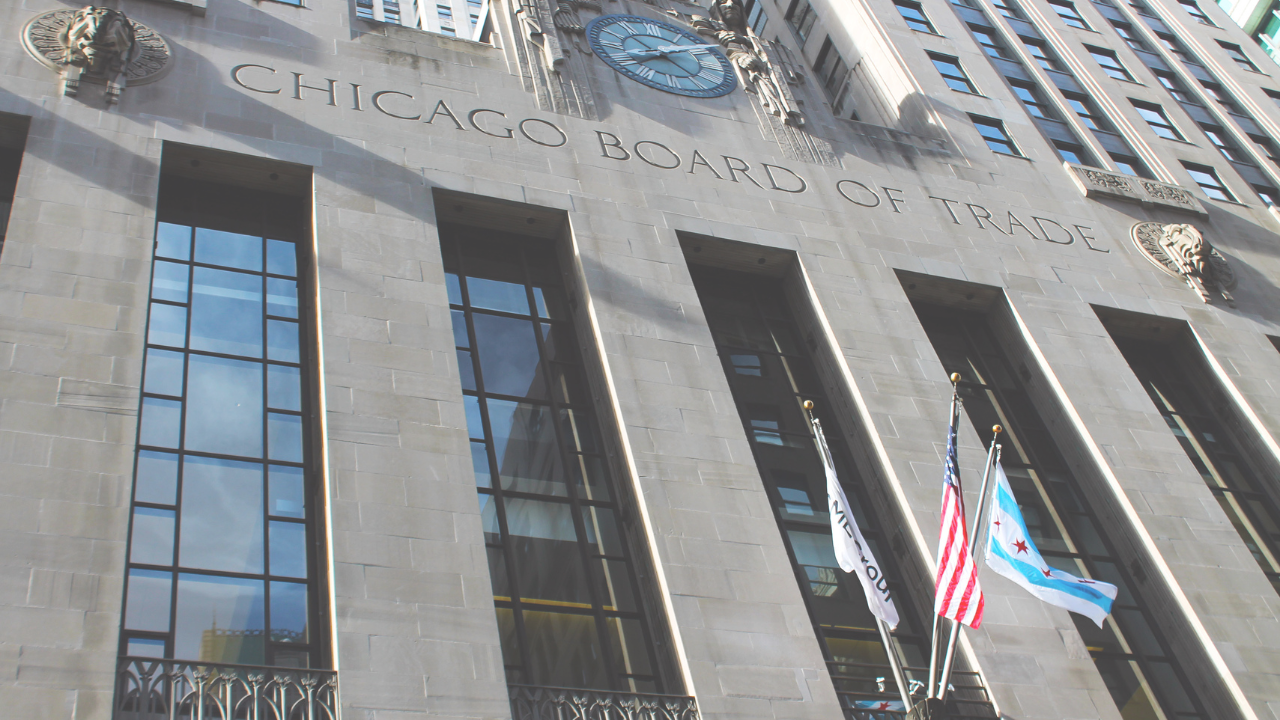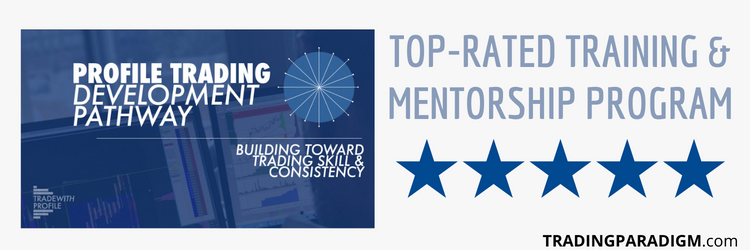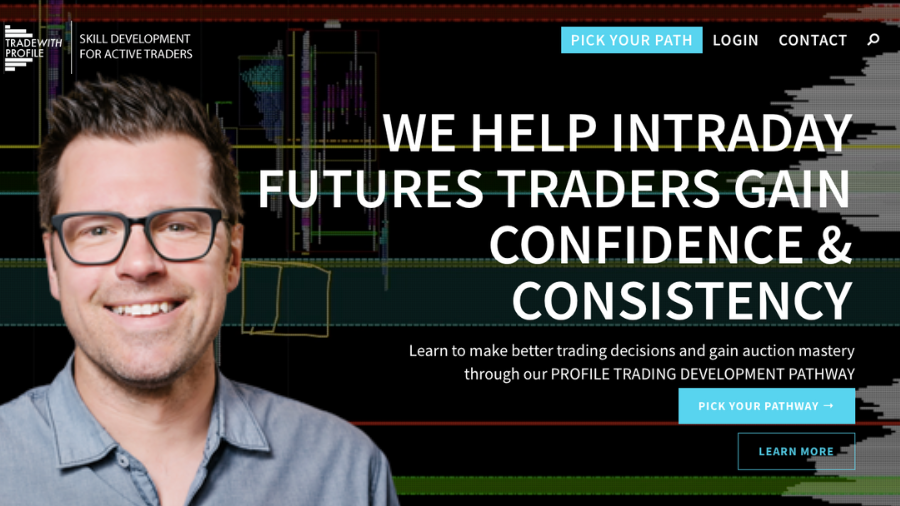Day Trading Futures For Beginners – What Does Trading Futures Mean?
As a beginner, the typical path is to get started trading stocks. Most people are familiar with the stock market because of big companies like Apple (AAPL), Amazon (AMZN), and Netflix (NFLX) – so stock trading is essentially the “default” for most new traders.

It’s inherently easy to understand. You buy a share of AAPL, AMZN, NFLX, or any other stock – and you own a piece of that company. When you go to sell it, you pass on your stake in the company to somebody else. The overall concept is fairly straightforward.
But futures aren’t as readily known and understood – which is a shame because they’re hands-down the best products to trade for intraday traders, in my opinion. Learning what futures are really isn’t all that complicated – it’s just a matter of familiarity.
Free Futures Trading Educational Resources ↓
Once you understand why futures markets exist and the role of various futures market participants (commodities producers & consumers, hedgers, and speculators), it’s much easier to make sense of what futures contracts are and how they’re typically used.
Without this foundational understanding, the typical one-sentence explanation of what futures are can be extremely confusing. Here it is: futures are derivative contracts that obligate parties to buy or sell an asset at a predetermined future date and price.
This explanation isn’t all that helpful without context, so this article is designed to fill in the blanks on what futures trading means.
What Exactly is a “Derivative” and How Does a Futures Contract Work?
A futures contract is a derivative, which means that the contract value is based on some underlying asset (like gold, silver, corn, wheat, soybeans, crude oil, etc.). All futures contracts are standardized and regulated by the Chicago Mercantile Exchange (CME).
So if we take the E-Mini S&P 500 (ES) futures, for example, the underlying asset is the S&P 500 index. Said another way, an ES futures contract is a derivative of the S&P 500 index – which is one of the most commonly followed equity indices around the globe.
The lowest price increment for any futures contract is known as a tick – and each tick of an E-Mini S&P 500 (ES) futures contract is equivalent to $12.50. So if you buy 1 contract and sell it 8 ticks higher, you make a profit of $100 (8 x $12.50 = $100).
Futures markets were originally created for commodities producers and consumers to protect themselves against price fluctuations. But these days, it’s not necessarily used for the purpose of hedging risk amongst retail traders and other speculators.
Take, for example, a corn farmer who wants to protect himself from a drop in market price for corn (which could drastically impact his bottom line). By selling corn futures, he can essentially “lock-in” an acceptable price right now and limit his downside risk.
This sort of thing is the basis for futures contracts. But futures have also created great opportunities for active intraday traders.
Benefits of Futures – Trading Futures vs. Options, Stocks, Forex, Crypto, etc.:
Futures often get overlooked in place stocks, options, forex, and crypto – but in my experience – futures are by far the best products for intraday traders. It took me a while to finally come around to futures trading, but I wish I had done it much sooner.
In my opinion, from products to trade to mentors to funding opportunities, the futures trading space is superior to any other:
1. HIGH LIQUIDITY
In futures markets, especially something like the E-Mini S&P 500 (ES) and E-Mini Nasdaq 100 (NQ), you can consistently count on fairly high volumes and tight bid-ask spreads. This isn’t necessarily the case for many other trading products/instruments.
2. AROUND-THE-CLOCK ACCESS
I don’t personally like to trade outside of standard market hours (9:30 am to 4:00 pm EST). But for individuals in different times zones with varying schedules and preferences, futures markets are open nearly 24 hours per day with short settlement/maintenance breaks.
3. EASE OF SHORTING
As opposed to stock trading where shorting can be a nuisance (between finding borrows and paying borrow fees), futures markets make shorting simple. It’s just as easy to sell first and then buy second as it is to buy first and then sell second.
4. LEVERAGE/CAPITAL EFFICIENCY
Leverage is a double-edged sword. It can be great when things go your way, but terrible when not managed properly. But for those with the skills to manage it appropriately, there’s virtually uncapped potential for how far you can take your futures account.
5. TAX BENEFITS
This isn’t tax advice, so consult a tax expert when it comes to your personal situation. But profits from futures trading are subject to the 60/40 rule – which means that 60% are subject to long-term capital gains and only 40% are subject to short-term capital gains.
6. EXCHANGE REGULATION
A unique aspect of futures markets is that they’re centralized through one single exchange, the Chicago Mercantile Exchange (CME). So unlike forex where price and volume data can tend to be untrustworthy, futures markets offer clean and accurate data.
Best Futures Trading School – Teaching Futures Trading Strategies That Work:
There are a bunch of futures trading courses out there like the Introduction to Futures course offered by CME Group – which I suggest checking out for a deeper understanding of contract codes/specifications, settlement/expiration, margin, etc.
But if you want to go beyond the basics and actually develop the trading skills and edge necessary for long-term, sustainable success – then I highly recommend Trade With Profile by Josh Schuler and his Profile Trading Development Pathway program.
This is the type of course that teaches a deep understanding of market behavior and how to build your own playbook (or set of trading setups/strategies) based on probable behavior. It’s a framework rooted in auction market theory and volume/market profiling.
I’m a huge proponent of traders developing the right mindset/psychology, but that doesn’t mean having real edge isn’t just as important. And in my opinion, Trade With Profile offers the market understanding and legitimate edge that a lot of people are missing.
So much trader training available online is weak and one-dimensional. Double tops and bottoms sound great in a lesson, but they don’t actually work on their own in real markets. There’s no edge in cookie-cutter price patterns without context.
You have to take your market understanding from 1D to 3D with robust analysis of meaningful market-generated information.
How to Trade Futures For a Living – Develop Skills/Edge and Then Get Funded:
Once you have a robust market framework and legitimate trading skills, there are plenty of funding opportunities within the futures space. In other words, you don’t need to tie-up/risk five or six figures of your own capital in order to trade.
You can become a fully funded, professional-level trader for as little as several hundred dollars. If you can prove your abilities to generate gains while simultaneously managing risk within a simulated account, there are programs out there that will fund you.
My personal favorite futures funding program is Topstep Trader. They essentially created the online funded trader industry back in 2012 (roughly 10 years ago) and were one of the only programs doing it for years. But now there’s a lot more competition.
Even with dozens of new, flashy funded trader programs popping up all over the place now, I still think Topstep is the best. Everyone else has just copied their business model – and I have a lot more trust in them as a long-standing pillar of the industry.
But regardless of the exact funding program(s) you choose to pursue, the bottom line is that they offer incredible opportunities for people (who might not otherwise have the means) to professionalize their trading operations and realistically trade for a living.
I think the futures space offers the best trading instruments, training/mentorship services, and overall resources for success.
Check Out My Free Trading Success Framework Course
Written by Matt Thomas (@MattThomasTP)
Related Pages:
- What is Market Profile – Trading With Market Profile
- What is Trade With Profile – Best Trader Training Program?
- Top 3 Reasons Why Traders Fail at Such a High Rate (~90%)
- What is EdgeClear – Is EdgeClear the Best Futures Brokerage?
- What is Topstep Futures – Earn a Funded Futures Account







